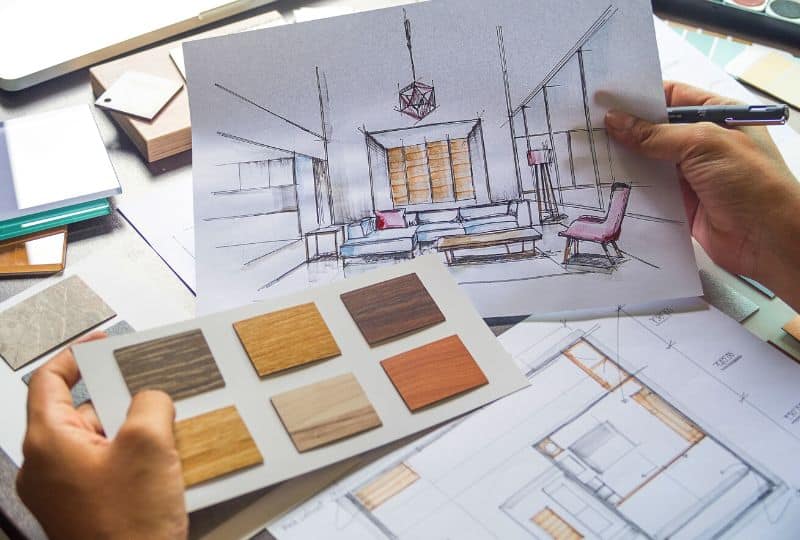As French artist, Paul Gauguin remarked, “Color! What a deep and mysterious language, the language of dreams.” For modern dwellers today, homes are one-of-a-kind blank canvases to decorate with artistic colors and interior designs.
Nonetheless, just like pieces of art, creating something deep, intriguing, and aesthetically pleasing requires knowledge of some basic techniques.
Let’s examine closer a few must-know color theory basics for interior design. Here are the key guidelines to keep in mind to curate a stunning and coordinated space—and express personality.
1. Focus on the Color Wheel as a Guide
Taking into consideration the importance of the science of color theory is key to curating good home design. Selecting the right combination of colors in a room can increase ambiance, influence moods, and ultimately affect how an inhabitant or guest feels.

People can interpret and process color differently. For this reason, one of the most-know color theory basics for interior design is to use the color wheel as a visual guide.
Achieving color harmonization in design comes from using this baseline roadmap that consists of primary colors—blue, yellow, and red—and secondary colors—green, orange, and purple. Not to mention the mixture of these primary and secondary colors called tertiary colors.
Add black and white to the wheel, and suddenly you have a dozen standard hues to use to define your spaces. Focus on this tool to create alluring color combinations.
2. Use the 60-30-10 Rule To Create a Color Scheme
In the wide world of interior design, color scheme refers to the framework of a specific color palette. These days, decorating with neutral colors is the failsafe option, as dipping one’s toes into color can be a daunting experience. Nevertheless, infinite options are available for bold or neutral spaces alike. How can you determine the best color scheme for their living spaces?
Fortunately, the decision-making process is a little easier with one of the oldest rules in the book: the 60-30-10 rule. For a cohesive look, simply use 60 percent dominant color, 30 percent of a secondary supportive shade, and 10 percent of a more vibrant accent hue.
3. Understand Different Color Tones and Temperatures
The final critical color concept to understand is that of warm and cool tones. Colors on the color wheel are divided into these two distinct categories based on their undertones.

Image Source: pexels.com
Colors register either as warm with red undertones or cool with blue undertones. You’ll find these divided half and half on the wheel, with warm on the yellow-red side and cool on the green-purple side.
Remember, the tone of a color plays a significant role in complementing and contrasting your home’s décor and accents. Certain materials have innate undertones to recognize when designing your dream interiors and selecting upholstery fabrics or textiles that suit the style.
At the end of the day, color theory is both a deep science and sophisticated art and—when used correctly—establishes cohesive flow and beauty within a beloved space.




Leave a Reply